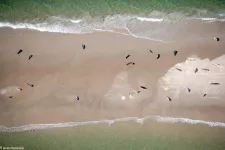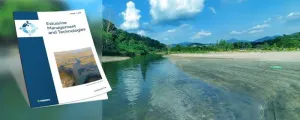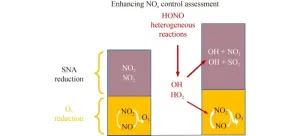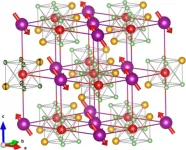As part of the Ice Memory initiative, PSI researchers, with colleagues from the University of Fribourg and Ca’ Foscari University of Venice as well as the Institute of Polar Sciences of the Italian National Research Council (CNR), analysed ice cores drilled in 2018 and 2020 from the Corbassière glacier at Grand Combin in the canton of Valais. A comparison of the two sets of ice cores published in Nature Geoscience shows: Global warming has made at least this glacier unusable as a climate archive.
Reliable information about the past climate and air pollution can no longer be obtained from the Corbassière glacier in the Grand Combin massif, because alpine glacier melting is progressing more rapidly than previously assumed. This sobering conclusion was reached by researchers led by Margit Schwikowski, head of the Laboratory for Environmental Chemistry at PSI, and Carla Huber, PhD student and first author of the study, when they compared the signatures of particulate matter locked in the annual layers of the ice. Glaciers are invaluable for climate research. The climatic conditions and atmospheric compositions of past ages are preserved in their ice. Therefore, they can serve, in much the same way as tree rings and ocean sediments, as a so-called climate archive for research.
Normally, the amount of particle-bound trace substances in ice fluctuates with the seasons. Substances such as ammonium, nitrate, and sulfate come from the air and are deposited on the glacier through snowfall: The concentrations are high in summer and low in winter, because lower amounts of polluted air can rise from the valley when the air is cold. The 2018 ice core, which was drilled from depths of up to 14 metres during a preliminary study and contains deposits dating back to 2011, shows these fluctuations as expected. But the core from 2020, from a depth of up to 18 metres – drilled under the leadership of PSI researcher Theo Jenk – shows those fluctuations only for the upper three or four annual layers. Deeper in the ice – that is, farther in the past – the curve indicating the concentration of trace substances becomes noticeably flatter, and the total amount is lower. Schwikowski’s team reports on this in the current issue of the journal Nature Geoscience.
Washed away by meltwater
Their explanation for the observed discrepancy: Between 2018 and 2020, the glacier melting must have been so strong that an especially large amount of water from the surface penetrated into the glacier and carried the trace substances it contained into the depths. “But apparently the water there did not freeze again, concentrating the trace substances,” the environmental chemist concludes, “but instead it drained off and literally washed them away.” Of course, that distorts the signatures of the layered inclusions. The climate archive is destroyed. It is as if someone had broken into a library and not only messed up all the shelves and books, but also stole a lot of books and mixed up the individual words in the remaining ones, making it impossible to reconstruct the original texts.
The researchers examined the meteorological data from 2018 through 2020: Since there is no weather station at the top of the Grand Combin, they combined data from the surrounding stations and extrapolated it for the study area on the mountain. According to this calculation, it was warm on the glacier in line with the general climatic trend, but these years were not extreme outliers. “From this we conclude that there was no singular trigger for this strong melting, but that it resulted from many warm years in the recent past,” Schwikowski says. “It seems a threshold has been crossed, which now has led to a comparatively strong effect.”
Unexpected dynamics
The bottom line is that the example of the Grand Combin shows that the melting of glaciers is progressing more dynamically than experts had assumed. “For a long time it has been clear that the glacier tongues are retreating. But we would not have thought that the areas feeding high alpine glaciers would also be so severely affected – that is, their highest part, where the ice replenishment is formed.” So far, the researchers have examined the distribution of oxygen isotopes in the ice, which can provide information about temperature developments, and of ionic trace compounds such as ammonium, nitrate, and sulfate. Next they want to analyse to what extent the signatures of organic substances in the ice are also affected.
Ice Memory: Ice core sanctuary in Antarctica
Another reason Schwikowski is interested in this is because, together with other ice core experts from around the world, she is involved in the initiative led by the Ice Memory Foundation. The aim of this research effort is to obtain ice cores from 20 endangered glaciers around the world in 20 years and collect them in a global climate archive. The cores, cut into rods around one metre long and eight centimetres in diameter, which were individually retrieved from the depths, are to be stored permanently and securely in an ice cave at the Italian-French research station Concordia in Antarctica – managed by an international governance on the long term. The reliable temperatures near the South Pole, averaging minus 50 degrees Celsius ensure that the cores will remain usable for studies in the future, even if global warming causes all alpine glaciers to melt at some point. This is important because analysis methods are constantly improving, and future generations of scientists could extract completely different information from the ice.
The Grand Combin ice core should be one of these 20 glacier samples. “But we already realised, on the mountain, that nothing would come of it,” Schwikowski says. “As I said, the test drilling in 2018 still looked good. But several times in 2020 we came across thick, solid layers of ice that had formed in the meantime as the water melted and froze again. We encountered one such particularly thick layer at a depth of 17 to 18 metres, which was underneath a very watery, soft layer. This transition caused us enormous problems. Especially when we were drilling deeper and then pulling it out, the drill got caught in the hard layer of ice. We nearly lost this expensive device.”
“Because further attempts at other parts of the glacier saddle encountered the same layer, and the same difficulties, the researchers had to abandon the expedition. They actually wanted to drill 80 metres deep, down to the bedrock, to record the entire archive of the glacier, which spans thousands of years. But this was not possible. “And our analyses have now confirmed it,”, Schwikowski says. “At the Grand Combin, we’re already too late.”
Race against time
It is to be feared that this is also the case with other glaciers around the world that have yet to be sampled as part of Ice Memory. In the Alps, besides the Col du Dôme glacier on Mont Blanc at 4,250 metres, where the project team first drilled in 2016, there is only Colle Gnifetti on the Italian-Swiss border, which is even higher at 4,450 metres and therefore colder than the Grand Combin glacier. There the PSI team, together with the Ice Memory Foundation partners, was actually able to obtain an ice core with the signature still intact the following year. Cores from Illimani in the Bolivian Andes, from Belukha in the Russian Altai, and from Elbrus in the Caucasus have already been secured. Last year, there were also expeditions on Spitsbergen and the Col del Lys in Italy; their analyses are still pending. An expedition to Kilimanjaro, which has the only significant ice body in Africa, failed last year due to political and administrative issues.
The project is a race against time. It is by no means guaranteed to succeed. Setbacks like those at Grand Combin become more likely every year.
Text: Jan Berndorff
About PSI
The Paul Scherrer Institute PSI develops, builds and operates large, complex research facilities and makes them available to the national and international research community. The institute's own key research priorities are in the fields of matter and materials, energy and environment and human health. PSI is committed to the training of future generations. Therefore about one quarter of our staff are post-docs, post-graduates or apprentices. Altogether PSI employs 2200 people, thus being the largest research institute in Switzerland. The annual budget amounts to approximately CHF 420 million. PSI is part of the ETH Domain, with the other members being the two Swiss Federal Institutes of Technology, ETH Zurich and EPFL Lausanne, as well as Eawag (Swiss Federal Institute of Aquatic Science and Technology), Empa (Swiss Federal Laboratories for Materials Science and Technology) and WSL (Swiss Federal Institute for Forest, Snow and Landscape Research). Insight into the exciting research of the PSI with changing focal points is provided 3 times a year in the publication 5232 - The Magazine of the Paul Scherrer Institute.
Contact
Prof. Dr. Margit Schwikowski
Head of the Laboratory for Environmental Chemistry
Paul Scherrer Institute, Forschungsstrasse 111, 5232 Villigen PSI, Switzerland
Telephone: +41 56 310 41 10, e-mail: margit.schwikowski@psi.ch [German, English]
Original publication
High-altitude glacier archives lost due to climate change-related melting
C.J. Huber, A. Eichler, E. Mattea, S. Brütsch, T.M. Jenk, J. Gabrieli, C. Barbante, M. Schwikowski.
Nature Geoscience, 26.01.2024
DOI: 10.1038/s41561-023-01366-1
END











